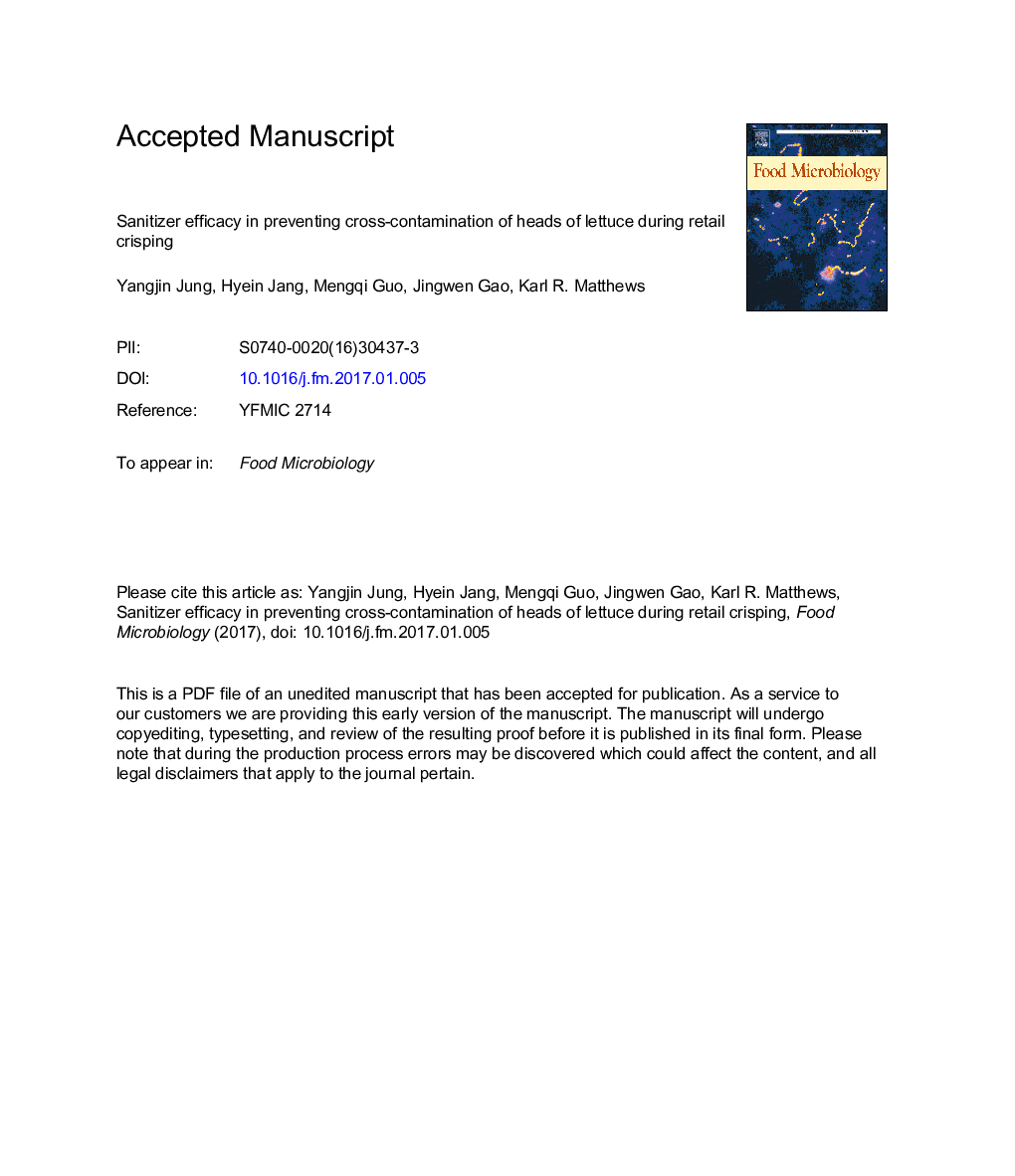| Article ID | Journal | Published Year | Pages | File Type |
|---|---|---|---|---|
| 5740224 | Food Microbiology | 2017 | 31 Pages |
Abstract
This study was conducted to provide information regarding mitigation of cross-contamination through the use of sanitizer during crisping at retail outlets. Seven non-inoculated heads and one inoculated head (â5 log CFU/g) of lettuce were placed into commercial sink filled with 76 L of tap water (TW), electrolyzed water (EW, free chlorine: 43 ± 6 ppm), lactic acid and phosphoric acid-based sanitizer (LPA, pH 2.89), or citric acid-based sanitizer (CA, pH 2.78) and soaked for 5 min. Two subsequent batches (eight non-inoculated heads per batch) were soaked in the same solution. Soaking with EW significantly reduced the population of S. enterica (2.8 ± 1.5 log CFU/g), E. coli O157:H7 (3.4 ± 1.1 log CFU/g), and L. monocytogenes (2.6 ± 0.7 log CFU/g) inoculated on Romaine lettuce compared to TW, LPA, and CA (p < 0.05). On Red leaf lettuce, EW significantly reduced populations of S. enterica and E. coli O157:H7, but not L. monocytogenes compared to other treatments. No significant difference was noted between TW, LPA, and CA in reducing foodborne pathogens (p > 0.05) or preventing cross-contamination. Soaking with EW prevented cross-contamination among lettuce heads and controlled bacterial populations in crisping water for three consecutive batches. EW may be an effective option as a sanitizer to minimizing the cross-contamination of leafy greens during the retail crisping.
Related Topics
Life Sciences
Agricultural and Biological Sciences
Food Science
Authors
Yangjin Jung, Hyein Jang, Mengqi Guo, Jingwen Gao, Karl R. Matthews,
